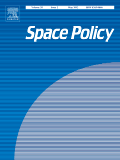
SPACE POLICY
Scope & Guideline
Navigating the Complexities of Space Policy and Governance.
Introduction
Aims and Scopes
- Space Governance and Policy Analysis:
The journal explores frameworks for space governance, including international treaties, national policies, and the roles of various actors in the space sector. - Public-Private Partnerships in Space:
A significant focus is on the dynamics between governmental space programs and private enterprises, examining how collaborations affect innovation, regulatory frameworks, and market growth. - Sustainability and Environmental Considerations:
The implications of space activities on Earth and other celestial bodies are critically analyzed, including discussions on debris management, resource extraction, and the ethical dimensions of space exploration. - Security and Geopolitical Implications:
Research often addresses the security challenges associated with space activities, including the militarization of space, cyber threats, and international relations. - Interdisciplinary Approaches to Space Issues:
The journal encourages contributions from various fields such as social sciences, humanities, and environmental studies, emphasizing the importance of diverse perspectives in understanding space policy. - Innovation and Technological Development:
It covers advancements in space technology and their impact on policy, including discussions on space transportation systems, satellite technologies, and emerging space economies.
Trending and Emerging
- Public-Private Partnerships and New Space Economy:
A surge in discussions surrounding the roles of private entities in space exploration and the implications of public-private partnerships is evident, reflecting the increasing commercialization of space. - Sustainability and Environmental Impact:
There is a growing emphasis on the sustainability of space activities, including environmental assessments and the preservation of celestial bodies, as awareness of ecological impacts rises. - Social and Ethical Dimensions of Space Exploration:
Emerging themes include the inclusion of social sciences and humanities perspectives in space policy discussions, addressing issues such as equity, representation, and the societal impacts of space activities. - Geopolitical Dynamics in Space:
Increasing analyses of the geopolitical implications of space exploration and the strategic interests of nations highlight the importance of understanding space in the context of global politics. - Technological Innovations and Regulatory Challenges:
Research is increasingly focusing on the regulatory frameworks needed to address innovations in space technology, including AI, space mining, and satellite mega-constellations.
Declining or Waning
- Traditional Nationalism in Space Policy:
While nationalism has been a significant theme in space policy discussions, recent papers have shifted towards collaborative international approaches, indicating a decline in purely nationalistic perspectives. - Historical Space Missions Analysis:
Research centered solely on historical missions, such as detailed examinations of past space programs, has decreased as the focus moves towards future-oriented policies and technologies. - Space Law's Conventional Frameworks:
There is a noticeable decline in papers discussing traditional space law frameworks without considering new technological advancements, such as commercial activities and private sector involvement. - Single-nation Space Initiatives:
Research that focuses on space activities from a single-nation perspective is waning, as there is a growing emphasis on international cooperation and multi-national partnerships. - Ethical Considerations in Isolation:
While ethics remain a relevant topic, discussions that treat ethical considerations in isolation from policy and technological impacts are becoming less frequent, indicating a trend towards integrated analyses.
Similar Journals
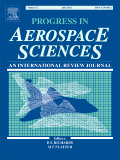
PROGRESS IN AEROSPACE SCIENCES
Transforming aerospace knowledge into practical advancements.PROGRESS IN AEROSPACE SCIENCES is a prestigious journal published by PERGAMON-ELSEVIER SCIENCE LTD, recognized as a leading platform in the field of aerospace engineering, mechanical engineering, and mechanics of materials. With an impressive history dating back to 1961, the journal covers a wide spectrum of topics pivotal to advancing aerospace technology and innovation. Its recent ranking as Q1 in multiple engineering categories underscores its significance, ranking #1 in Aerospace Engineering and placing within the top 20 percentile in both Mechanical Engineering and Mechanics of Materials, according to Scopus assessments. Researchers, professionals, and students looking to engage with high-impact research will find PROGRESS IN AEROSPACE SCIENCES an invaluable resource, offering insights into cutting-edge developments and methodologies. Although it does not operate under an open-access model, the journal upholds rigorous peer-review standards, ensuring that the published content meets the highest academic integrity. Situated in the United Kingdom, it plays a critical role in fostering international collaboration and knowledge-sharing in the aerospace sector.

Artificial Satellites-Journal of Planetary Geodesy
Advancing Geodesy: Bridging Satellites and Planetary StudiesArtificial Satellites-Journal of Planetary Geodesy is a pivotal academic journal dedicated to the field of planetary geodesy, focusing on the intersection of satellite technology and planetary sciences. Published by SCIENDO, this journal, with an ISSN of 0208-841X and an E-ISSN of 2083-6104, offers comprehensive insights into current research developments through peer-reviewed articles. Operating under an open-access model, the journal is accessible to a wide audience, fostering a collaborative environment among researchers and practitioners worldwide. Established in 2009, it has emerged as a significant resource, ranking in the Q4 category for Space and Planetary Science and recognized in the Scopus database, placing it within the 12th percentile among earth and planetary sciences journals. The journal's objective is to advance knowledge in the application of satellite technology to planetary studies, making it an essential platform for innovative research, methodological advancements, and interdisciplinary dialogues for professionals, researchers, and students in the field.
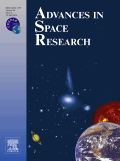
ADVANCES IN SPACE RESEARCH
Connecting Disciplines to Illuminate the Heavens.ADVANCES IN SPACE RESEARCH, published by Elsevier Science Ltd, is a leading journal in the fields of Aerospace Engineering, Astronomy and Astrophysics, Atmospheric Science, and more. Since its inception in 1981, this journal has dedicated itself to the dissemination of high-quality research contributing to the understanding of space and planetary sciences through a multidisciplinary lens. With an impressive impact factor reflected in its positioning within the Q1 and Q2 quartiles across various categories, it serves as an essential resource for researchers and professionals alike. The journal's rigorous peer review process ensures that only the most relevant and groundbreaking studies are published, making it a cornerstone for those navigating the complexities of space research. The journal is accessible by subscription, inviting a global readership to engage with trailblazing research that influences future advancements and fosters collaborations across the scientific community. With a reputation for excellence, ADVANCES IN SPACE RESEARCH remains committed to pushing the boundaries of knowledge in the ever-evolving field of space exploration.

Space Science and Technology-Kosmicna Nauka i Tehnologia
Pioneering discoveries in space science and technology.Space Science and Technology-Kosmicna Nauka i Tehnologia is an esteemed journal dedicated to advancing knowledge in the fields of Aerospace Engineering and Space and Planetary Science. Published by the well-regarded PUBLISHING HOUSE AKADEMPERIODYKA in Ukraine, this journal serves as a vital platform for researchers, professionals, and students to share groundbreaking findings and innovative technologies related to space exploration and engineering techniques. Since its establishment in 2019, Space Science and Technology has contributed significantly to the academic discourse in its category, currently holding a Q4 quartile ranking in both Aerospace Engineering and Space and Planetary Science as of 2023. Although it does not offer open-access publication, its listed ISSN (1561-8889) and E-ISSN (2518-1459) ensure wide accessibility to its published content. As the journal continues its journey from 2019 to 2024, it strives to enhance its impact and H-index while fostering collaboration and knowledge dissemination across the global space science community.
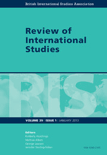
REVIEW OF INTERNATIONAL STUDIES
Navigating the complexities of global politics.REVIEW OF INTERNATIONAL STUDIES, published by Cambridge University Press, is a leading journal in the fields of Political Science and International Relations, with a robust focus on sociopolitical dynamics from a global perspective. Established in 1976, it has garnered a distinguished reputation, achieving a Q1 ranking in both Political Science and Sociology for 2023, underscoring its impact and relevance within the scholarly community. With an impressive Scopus ranking placing it in the 93rd percentile among peer journals in its field, this journal serves as an essential platform for researchers, professionals, and students engaged in critical analysis and discourse on international affairs. Although it does not currently offer Open Access options, the journal is committed to advancing knowledge through rigorous peer-reviewed research, contributing significantly to the academic dialogue surrounding global political issues.
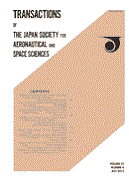
TRANSACTIONS OF THE JAPAN SOCIETY FOR AERONAUTICAL AND SPACE SCIENCES
Advancing Knowledge in Aeronautics and Space SciencesTRANSACTIONS OF THE JAPAN SOCIETY FOR AERONAUTICAL AND SPACE SCIENCES is a distinguished journal published by the Japan Society for Aeronautical and Space Sciences, focusing on the latest advancements and research in the fields of aerospace engineering and space and planetary science. With a broad range covering theoretical studies, practical applications, and experimental research, this journal serves as a vital platform for researchers, professionals, and students keen to explore the intricacies of aeronautics and space technologies. Although currently closed to open access, the journal maintains a significant presence in the academic community, boasting a 2023 Scopus ranking of Q3 in both of its respective fields and offering insights that contribute to ongoing discussions and innovations in aerospace. Since its inception in 1969 and with publications extending to 2024, the journal not only reflects the evolving landscape of aeronautics and space sciences but also encourages discourse that paves the way for future breakthroughs. For your engagement and contributions to this dynamic field, the TRANSACTIONS OF THE JAPAN SOCIETY FOR AERONAUTICAL AND SPACE SCIENCES stands as an essential resource.
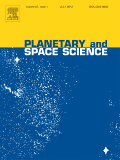
PLANETARY AND SPACE SCIENCE
Unlocking the Universe: Insights into Planetary Bodies and BeyondPLANETARY AND SPACE SCIENCE is a leading journal dedicated to the interdisciplinary field of astral studies, encompassing both planetary science and the exploration of space. Published by PERGAMON-ELSEVIER SCIENCE LTD in the United Kingdom, this journal has been pivotal since its inception in 1959, continually contributing to advancements in research about planetary bodies, their atmospheres, and the broader cosmic landscape. With an impressive impact factor, PLANETARY AND SPACE SCIENCE ranks in the second quartile of Astronomy and Astrophysics and the third quartile in Space and Planetary Science as of 2023, showcasing its scholarly significance. The journal aims to provide a platform for the dissemination of cutting-edge research, emphasizing the critical role of space exploration and planetary studies in understanding our universe. Researchers, professionals, and students alike are encouraged to explore the wealth of knowledge presented in its pages, fostering a deeper comprehension of the phenomena that shapes both our solar system and beyond.
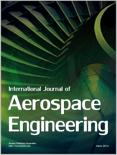
International Journal of Aerospace Engineering
Fostering Insight and Innovation in Aerospace EngineeringThe International Journal of Aerospace Engineering, published by HINDAWI LTD, stands at the forefront of innovation and research in the field of aerospace engineering. With an impact factor reflecting its contributions to the discipline and classified in Quartile 3 (Q3) for the year 2023, this journal provides a platform for high-quality, peer-reviewed articles that delve into advancements and challenges in aerospace technology and applications. Since its inception in 2008, the journal has embraced an Open Access model, promoting unrestricted dissemination of research findings to foster collaboration and knowledge sharing among researchers, professionals, and academia. The journal covers a broad spectrum of topics, aiming to enhance understanding and give insight into aerospace engineering's multifaceted aspects. With its coverage in the Scopus database, ranking 71 out of 153 in the aerospace engineering category, the journal is a valuable resource for those engaged in this dynamic field, ensuring that high-impact research receives the visibility it deserves.

SOLAR SYSTEM RESEARCH
Fostering Innovation in Space and Planetary ScienceSOLAR SYSTEM RESEARCH, published by Pleides Publishing Inc, offers a comprehensive platform for the exploration and dissemination of scientific knowledge in the fields of Astronomy, Astrophysics, and Space and Planetary Science. With its origins tracing back to 1969, this journal provides a vital resource for researchers and professionals seeking to deepen their understanding of the solar system's complexities, including planetary formation, extraterrestrial geology, and the dynamics of celestial bodies. Although categorized in the Q4 quartile for both relevant disciplines, SOLAR SYSTEM RESEARCH remains committed to publishing high-quality research that contributes to advancing contemporary scientific discourse. Dedicated to fostering collaboration and innovation, the journal is indexed in Scopus and adheres to rigorous academic standards, making it an essential resource for students and professionals alike pursuing the latest developments in solar system studies.

NPJ Microgravity
Innovating Across Disciplines in MicrogravityNPJ Microgravity, published by NATURE PORTFOLIO, is a premier open-access journal dedicated to advancing research in microgravity environments, complementing extensive studies in fields as diverse as Agricultural and Biological Sciences, Biochemistry, Materials Science, Medicine, Physics, and Space and Planetary Science. Since its inception in 2015, the journal has rapidly established itself as an influential platform for disseminating cutting-edge research, evidenced by its Q1 quartile rankings across multiple disciplines and impressive Scopus rankings, including a top 10 placement in Physics and Astronomy. Based in the United Kingdom with an address of HEIDELBERGER PLATZ 3, BERLIN 14197, GERMANY, NPJ Microgravity not only champions innovative studies but also promotes collaborations that can translate scientific knowledge into tangible benefits for society. As an open-access journal, it offers unparalleled accessibility to high-quality research, making it an essential resource for researchers, professionals, and students with a keen interest in the applications and implications of microgravity research.